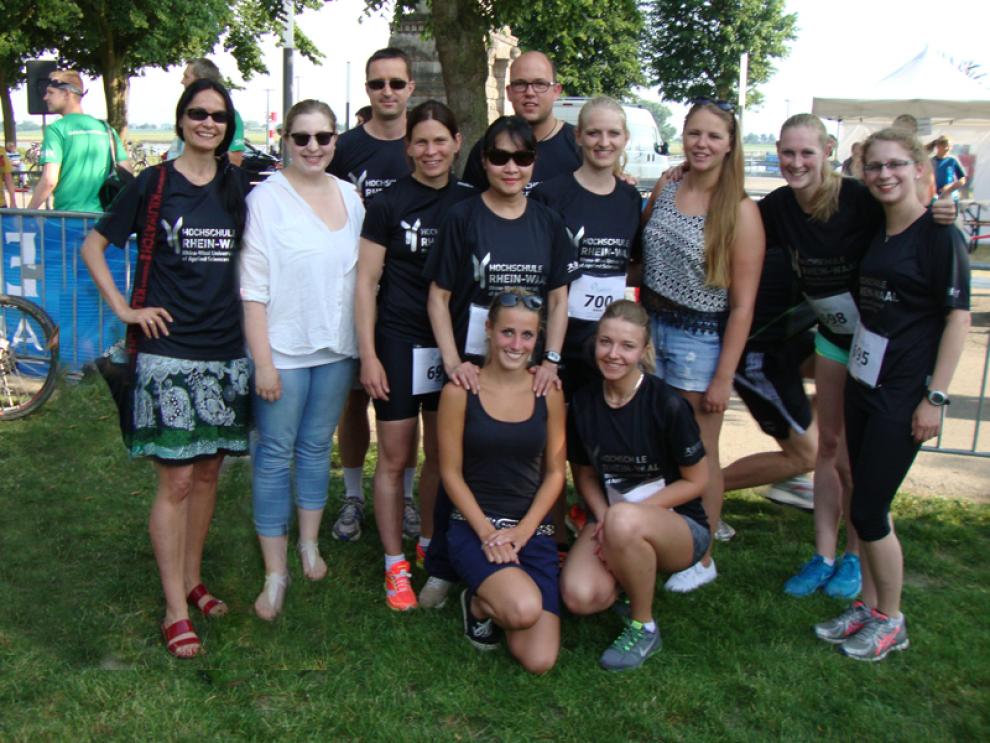There’s a runner in all of us!
Evaluating health benefits of distance running
Students at Rhine-Waal University of Applied Sciences recently organised and conducted project on the health benefits of distance running and used employees of the University as their guinea pigs.
Kleve/Kamp-Lintfort, 21 January 2016: Running is a part of who we are and a natural result of our evolutionary development. Our distant ancestors relied upon bipedal mobility for their survival and were able to run long distances when needed. Countless generations and technical/social advancements later, nowadays we run not to survive, but to stay fit and combat the habits of increasingly sedentary lifestyles in general. Nevertheless, the configuration of our muscles, joints and skeleton are all proof that running has never stopped being a part of who we are as humans.
It’s fair to say that movement is a part of human nature. This has made it a frequent goal of scientists to explain how health and movement are connected – a trend which continues to this day, for example in occupational health management studies at Rhine-Waal University of Applied Sciences. To evaluate the occupational health at our own University, a group of students recently ‘ran’ an experiment of their own and attempted to define the specific health benefits that untrained athletes get by training for distance running.
Nine students from the Bio Science and Health undergraduate programme at the Faculty of Life Sciences were responsible for organising and conducting the experiment under the supervision of Professor Dr Robert Renner, Professor of Health Promotion and Nutrition at Rhine-Waal University of Applied Sciences. The goal of the projct was to train employees of the University over a limited period of weeks so that afterwards each participant could complete a 5k run at a moderate pace and without stopping. None of the participants had previous running experience, nor were they actively involved in sport as of the start of the experiment. The 5k race at the end of the project, in which teams of runners from companies in and around the nearby city of Emmerich participated, served as both a barometer of the group’s success and as a motivational goal looming on the horizon.
Once the students developed and finalised a training concept for the participants, they began with twice-weekly training sessions for the participants. The conceptual goal of training units was to provide effective, personalised training exercises for each participant, shying away from a ‘one-size-fits-all’ approach. The training programme began with a series of walking exercises at various speeds and ramped up over time to intense jogging and sprinting exercises.
In order to empirically measure the positive effects of training, each participant was asked to undergo a trio of tests – an endurance test, a body composition test and a blood cholesterol test – at fixed intervals.
The data gathered during the project showed that it was possible to dramatically increase the endurance of each participant. Students also observed reductions in body fat, new muscle growth and healthier cholesterol levels in participants. The experiment proved that a moderate training regime focused on distance running and endurance can lead to a healthier cardiovascular and circulatory system, better cholesterol levels and loss of body fat.

